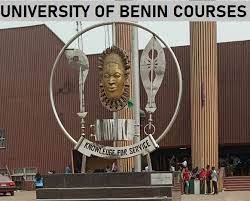What are the advantages and disadvantages of proportional representation? Proportional representation is a system used to elect representatives in multi-member constituencies. It is used to secure representation in the legislature in such a way that each group or political party gets seats in proportion to the percentage of votes casted in favor of a group or political party. The more the percentage of votes casted in favor of a political party, the more the seats that will be allocated to it. The system provides representation for all interest groups in a given community.
Proportional representation has two forms namely:
1. The single transferable votes: This system has some resemblance with the alternative voting system. It allocates quota to candidates contesting election. Each voter is expected to number the candidates in order for his preference when the votes are counted. Any candidate that exceeds his required quota, the remaining votes will not be wasted but transferred to another candidate following it. It will continue this way until the number of candidates allocated to the constituency have been elected.
2. Multi member list system: This is a system in which voter’s vote for parties rather than candidates. In this case, political parties prepare lists in the order which they want their candidates to be elected and these names are printed in that order on the ballot pappers. With each having its own ballot paper, a voter therefore selects the ballot paper of a party he wishes to vote for and vote for that party.
Seats are allocated to parties based on the total number of votes secured. For instance, if a party secures half of the total votes casted in a four member constituency, it means that two seats will be allocated to that party. Multi member list system is currently in practiced in Belgium, China, USSR, Israel, Switzerland, Finland, etc, with some modifications and slight variations.
Advantange of proportional representation
1. Popular votes: It is argued that proportional representation gives a true reflection of popular votes. This is undoubtedly true because the votes of every member of this system is counted and reflected in the results of elections. It is unlike an absolute majority where only the candidate with the highest vote wins, thus, letting only the majority to rule. In countries where proportional representation is practiced, every political group rules according to the votes they get from the people.
2. Equitable representation: The system provides representation for all interest groups in a community. It makes sure that every group in the society gets the leader they want, thus, promoting popular participation.
3. Democratic in nature: Proportional representation is democratic in nature. It is a more democratic system of election because everybody are allowed to participate in the system. This emphasizes leadership by the people.
4. Minority groups are protected: Another advantage which proportional representation has over other election systems is that it protects the minority. The system protects the interest of minority groups in the society who are not be able to influence the government through their few number.
4. Wider choice of leaders: proportional representation gives voters wider choice to make, especially in a multi member constituency. In this case, voter will be given the opportunity to vote for a political party or person that has the same political dreams and aspirations with them. The system gives the voters the chance to choose candidates on both personal and party merits.
5. It avoids wastage of surplus votes: Proportional representation usually avoid the wastage of vote that would have been the case in an absolute majority system or other election systems
Disadvantages of proportional representation
1. It is complicated: One of the major draw back of this system is that it is too confusing. Proportional representation is a complicated form of election. Sometimes, it is difficult to understand the structure of this kind of system because, all the groups in the society are led by different people or political parties.
2. It is expensive in nature: As you may know, systems that encourages wide elections are usually expensive and proportional representation is not an exception in this instance. The system is also very expensive to operate as all the resources of the state can be spent on conducting elections.
3. Multiplication of political parties: Proportional representation encourages multiplication of political parties which results in election violence. In countries where it is practiced, there is usually violence and crisis during election
4. Instability in politics: The system does not create room for political stability. This is so because there are a lot of political parties that are always making efforts to supersed their opponents and take over full political powers. Coupled with that, the inability of different political parties in winning clear majority in the legislature can also lead to the formation of coalition government which does not make for efficiency.
5. Manipulation of political parties: The manipulations of political parties makes it difficult for voters to assess them very well before voting. Thus, they votes blindly.
So far, we have looked at the meaning, advantages and disadvantages of proportional representation. I hope you understood and enjoyed reading this article. Kindly drop your comments and contributions in the comment box.


